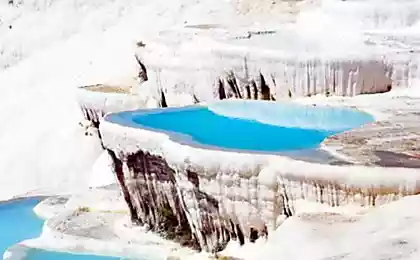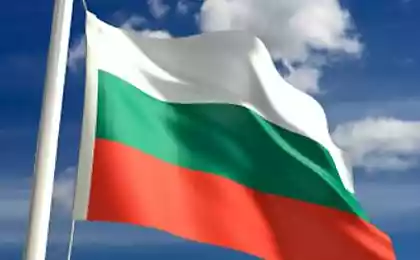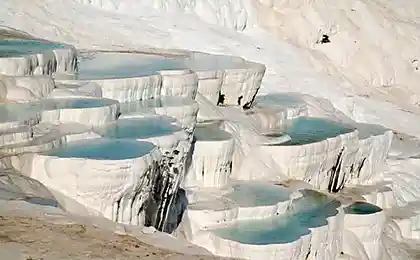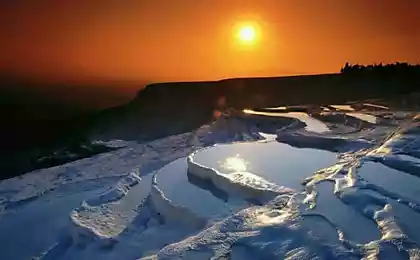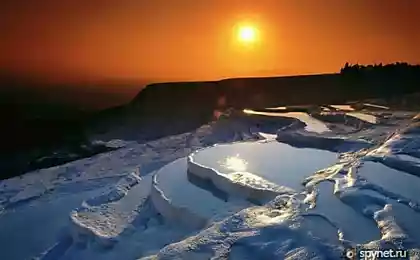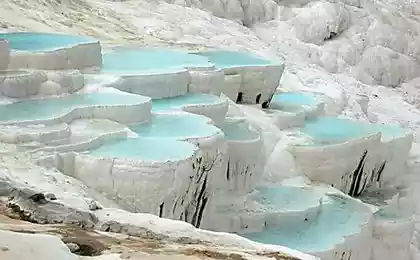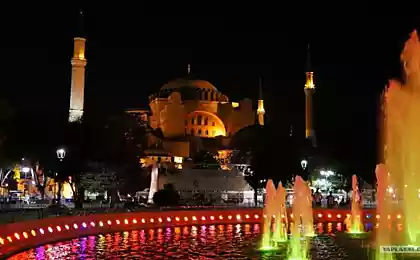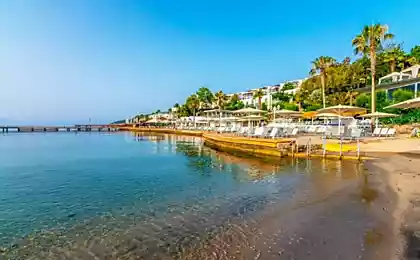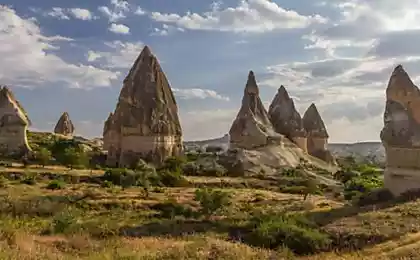712
Pamukkale - Turkey fairy business card
Just returned last night from a trip to Turkey, and already I hasten to share with Komrad most vivid impressions and photos of your route :) And I'll start with what is called the hallmark of the country - Pamukkale. This is followed by 30 ph and letters.
Pamukkale - a word that mellifluous those who love Turkey. Behind him lies a geological wonder called such a name for their snow-- translated it means "cotton castle».
01
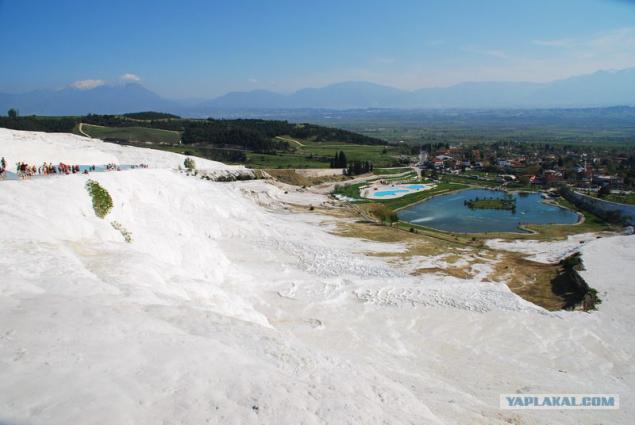
Water flowing down the slopes of the mountain forms a system of reservoirs with quaint limestone walls (travertine). Dazzling white terraces (travertine formation) appeared on the mountainside as a result of salt deposits from saturated calcium sources.
02
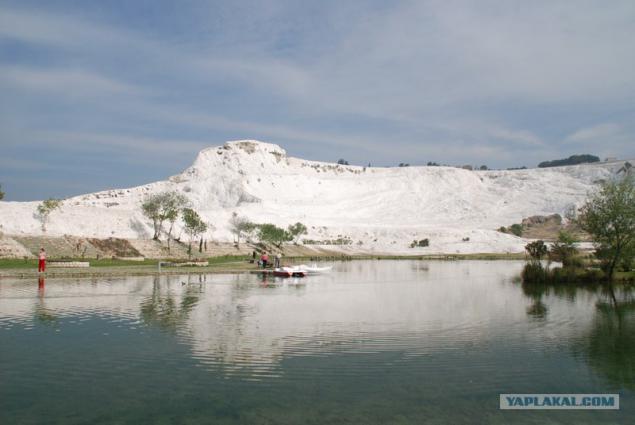
Hot Spring Water, rich in calcium carbonate over thousands of years, has turned the ridge of the mountains, located 19 km north of Denizli, in white stone terraces. The water temperature is 35 ° C, for centuries poured from one basin to another and creates breathtaking rock formation, which was introduced in 1988 in the UNESCO World Heritage List
03
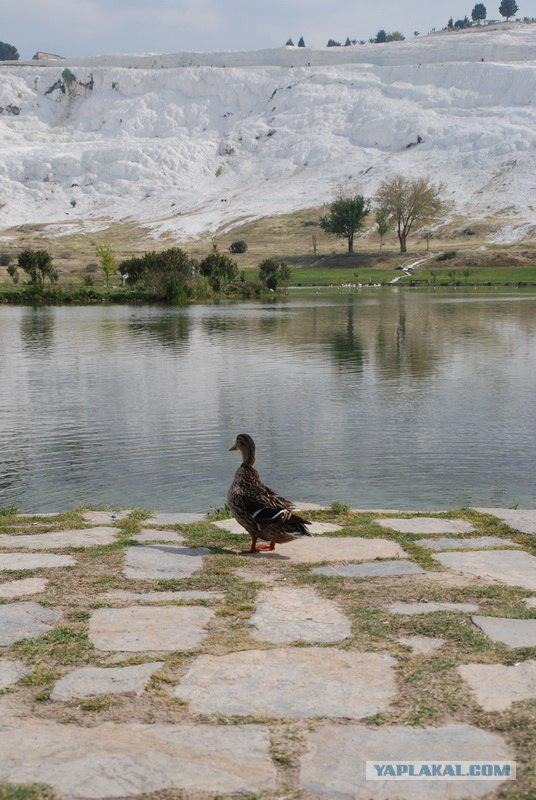
However, this fabulous dress, located at an altitude of 2000 m above the river Büyük Menderes River, threatened by the sad fate of becoming a victim of resourceful entrepreneurs. The snow-white natural pools gradually turn into dirty salty puddles. All this is officially the result of a long, hot summer, but in fact, it was due to the fact that more and more water is diverted to hotels to fill swimming pools. In the summer months crowds of tourists turned the plateau in the fair, polluting the water with oils and chemicals, adding its contribution to the destruction of this natural wonder.
04
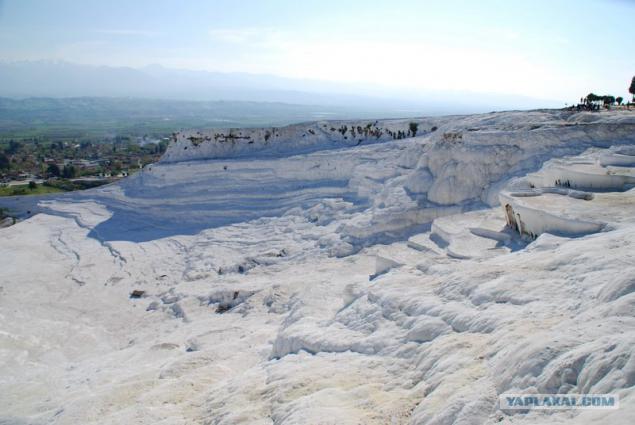
Earlier on salt terraces were allowed to walk barefoot, but because of the many tourists who annually visit Pamukkale, is banned. Now you can walk down the path and admire the magnificent spectacle from afar. These places are used as a resort area since ancient times.
05
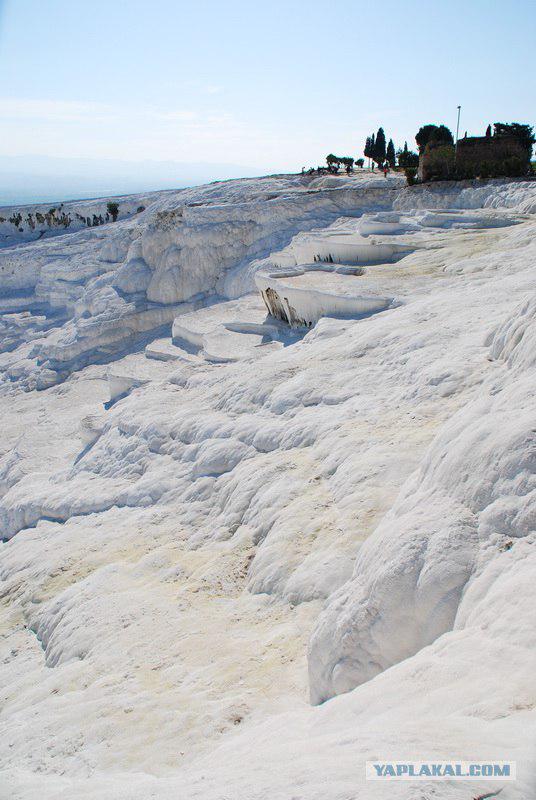
With the exception of specially designated tourist areas, you can not walk in travertine, as they are very fragile. Nevertheless, there is a dedicated area where you can even swim travertine. Also swimming pool is open Cleopatra.
06
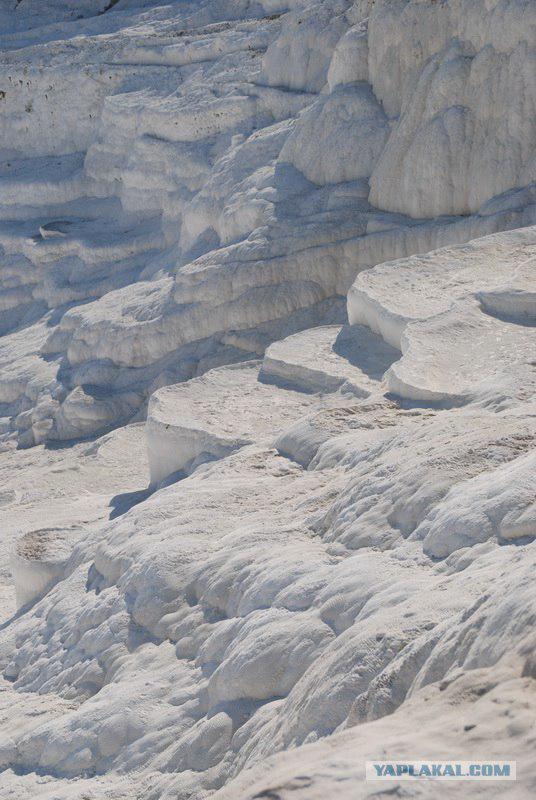
Pamukkale, a wonderful place in Turkey, where there are just two "wonder of the world" - the ruins of the ancient city of Hierapolis and the unique thermal keys. The water temperature reaches 40 degrees, the air - up to 35 degrees. Exit - cold!
07
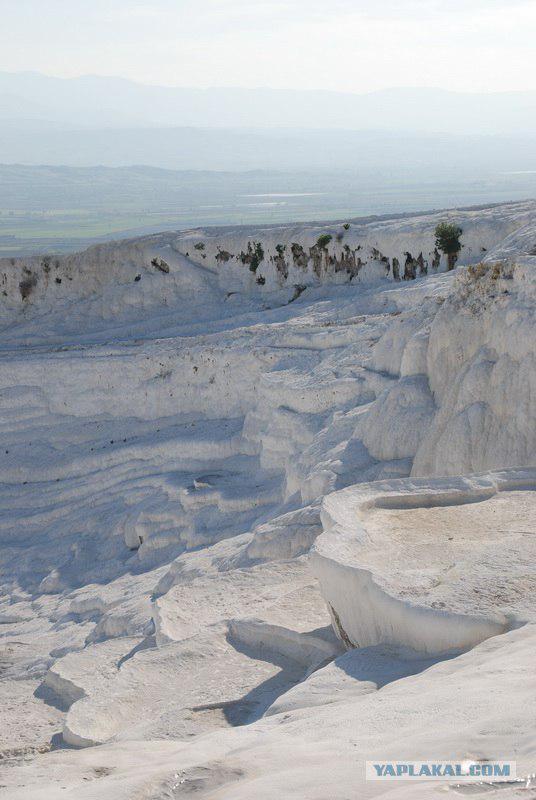
Pamukkale is a health resort. Treated here by the ancient Greeks. The treatment produced by receiving the thermal baths, mud baths and drinking mineral water, in combination with other treatments. The water in Pamukkale, enriched with calcium, has wonderful healing and rejuvenating properties.
08
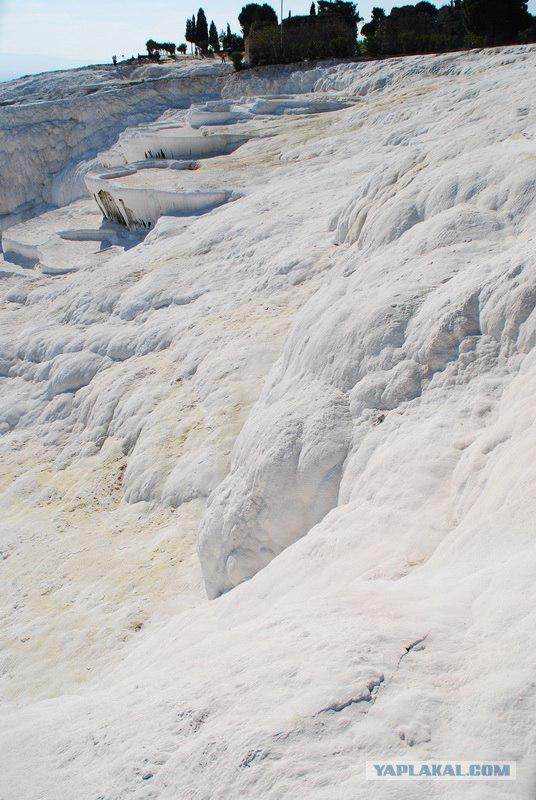
At the request of UNESCO in the mid-1990s, measures were taken to save this unique corner of nature - were demolished hotel built there, and banned bathing and walking. However, with time on the terraces of the hotel was rebuilt and now provides precious thermal water from natural rock pools.
09
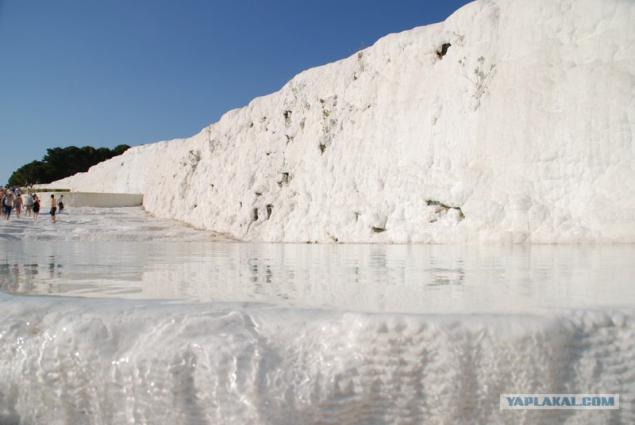
"Cotton Castle" is restored and takes his former fabulous views. Visitors are invited to walk barefoot on the road running along the stone terraces, which were built artificial concrete pools. They are due to precipitation of the water circulating in them, gradually covered with limestone and look like natural stone terraces.
10
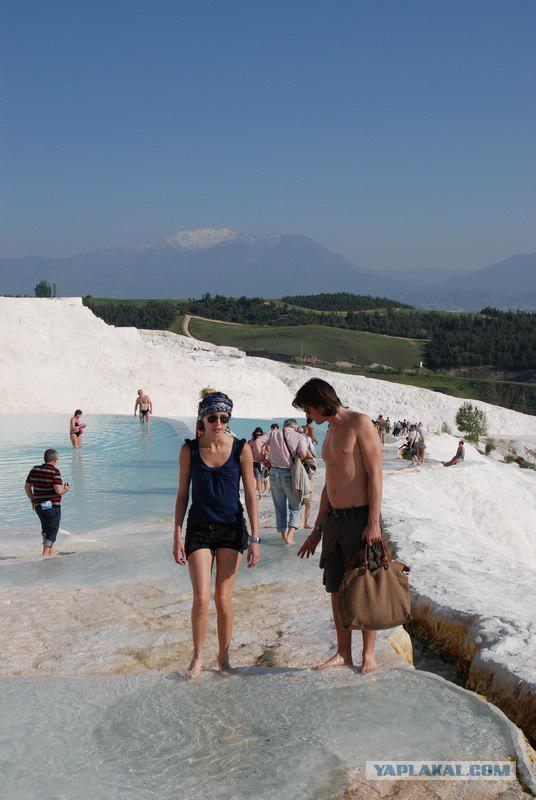
11
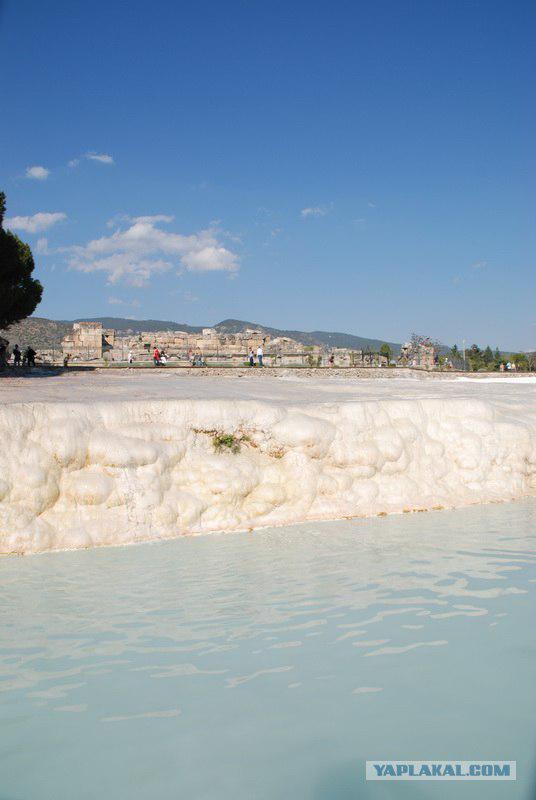
12
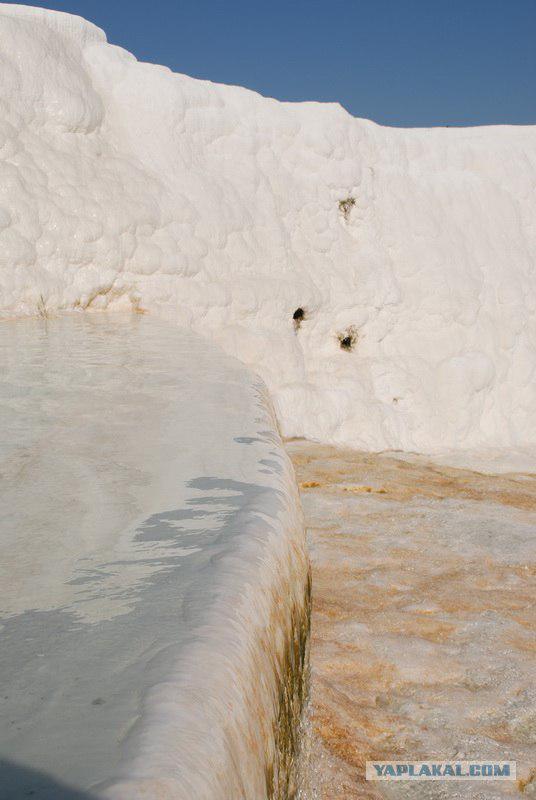
13
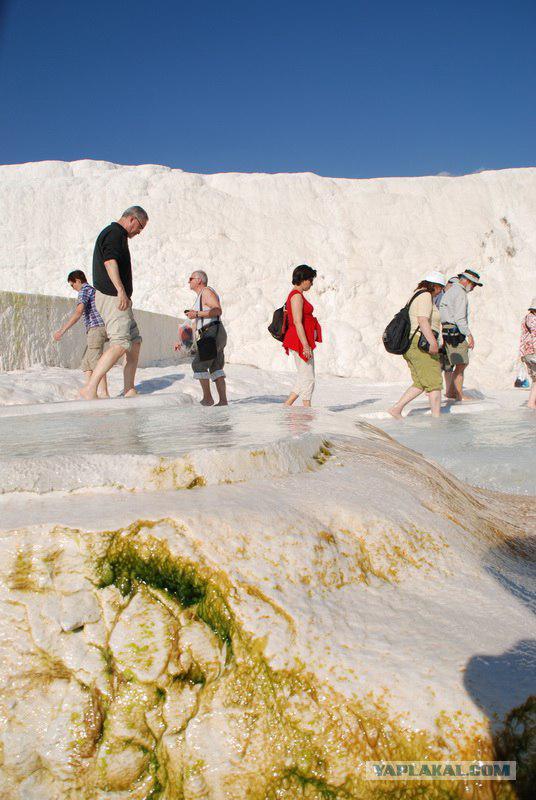
14
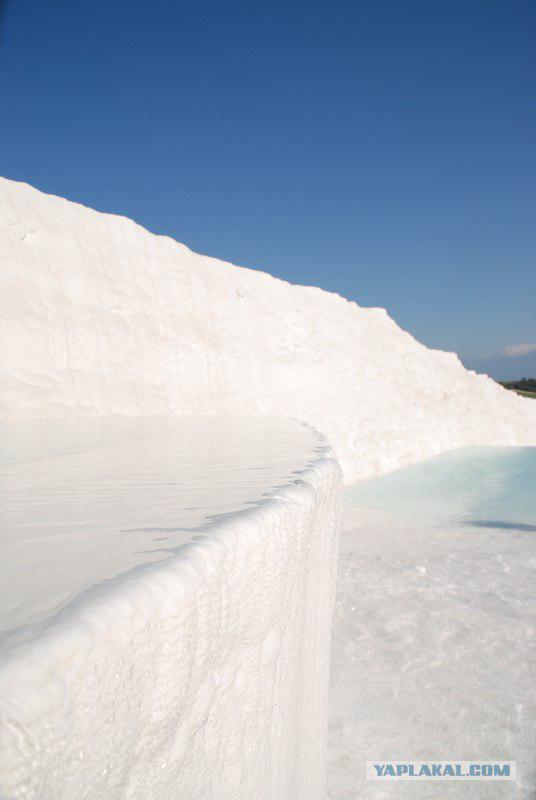
15
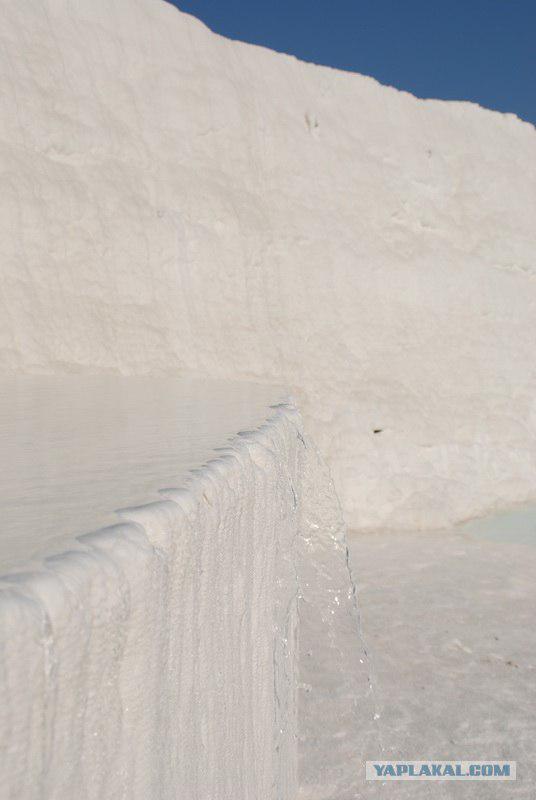
16
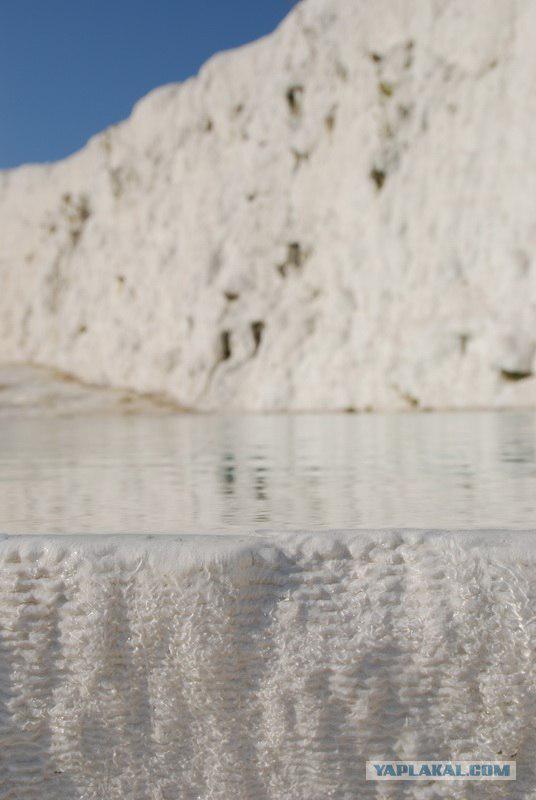
17
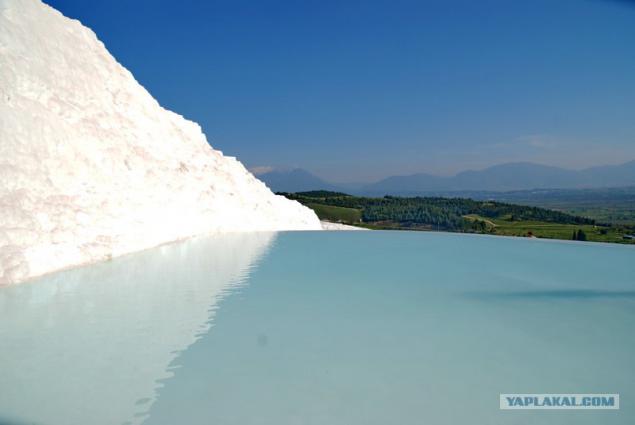
18
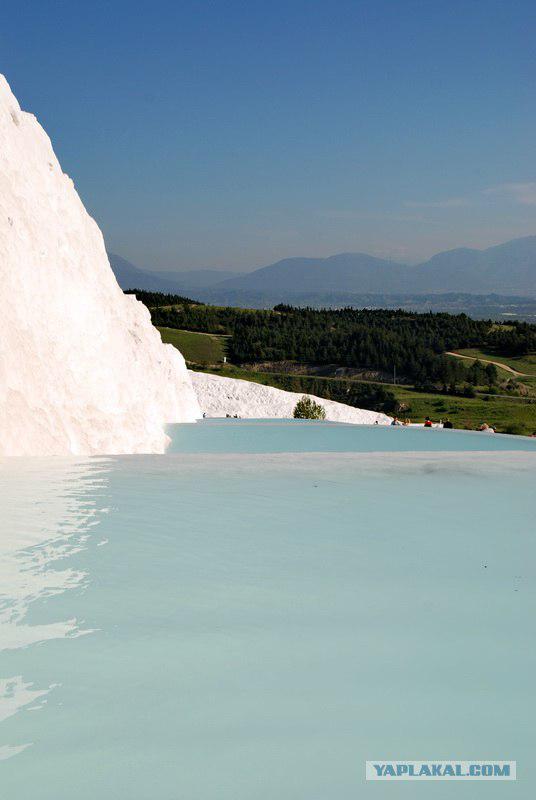
19
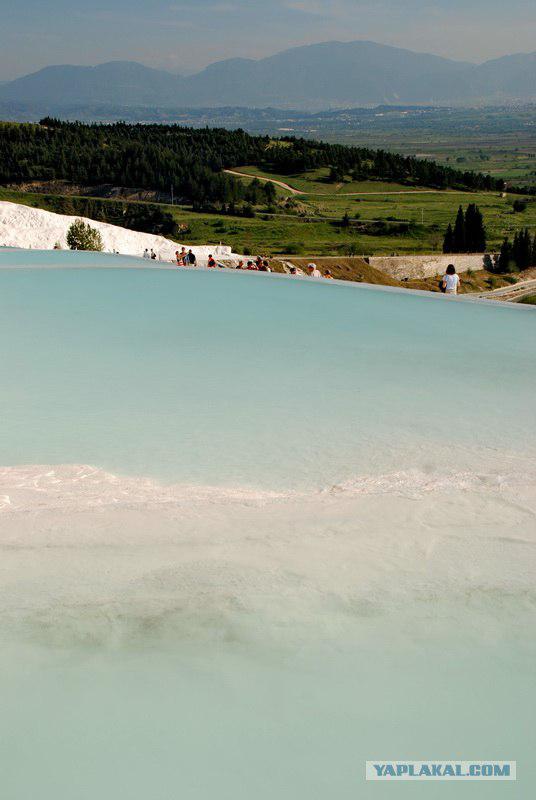
20
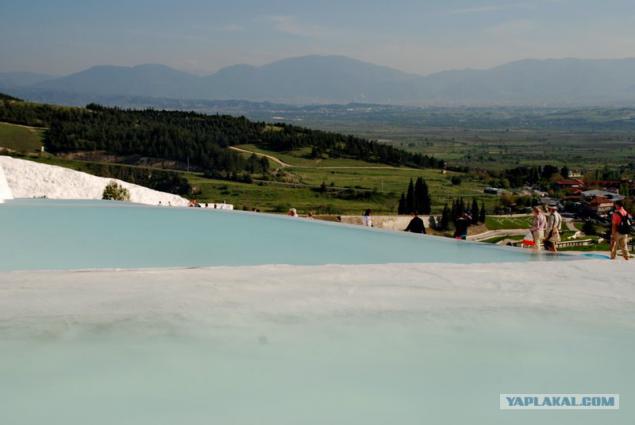
21
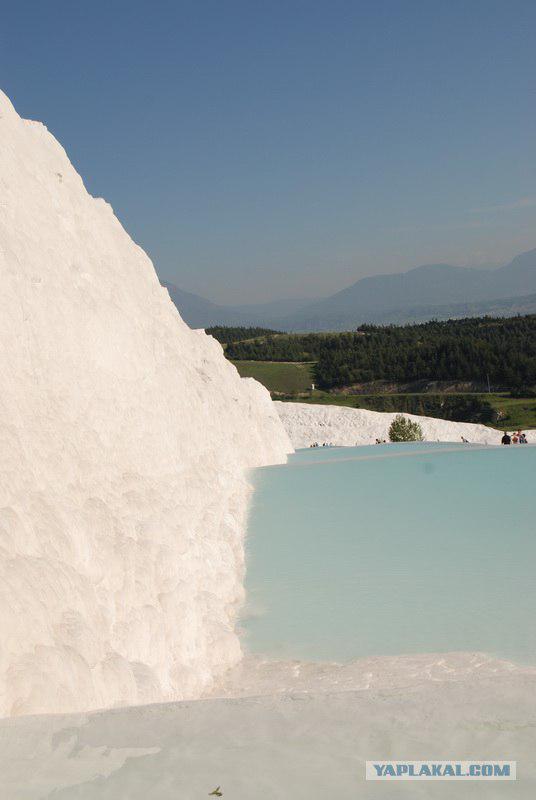
22
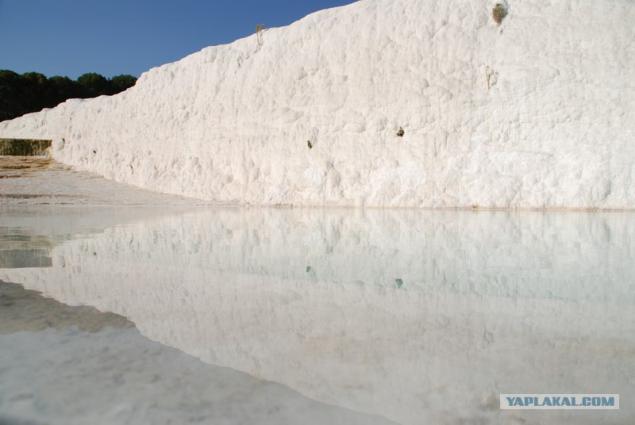
23
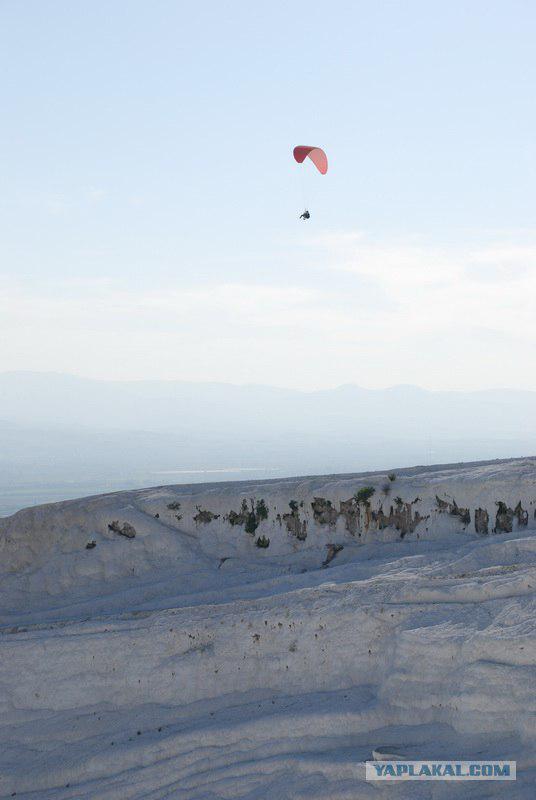
24
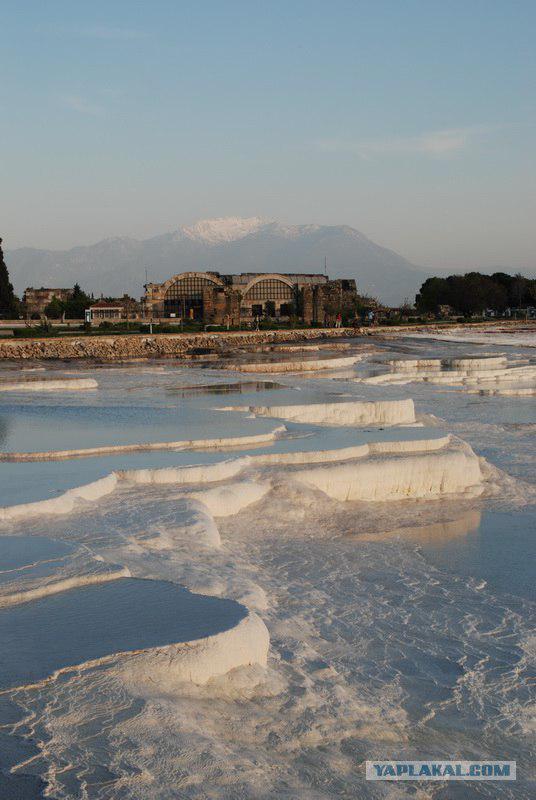
25
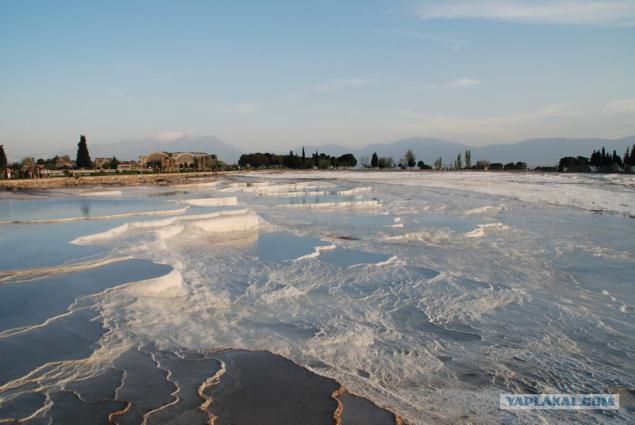
26
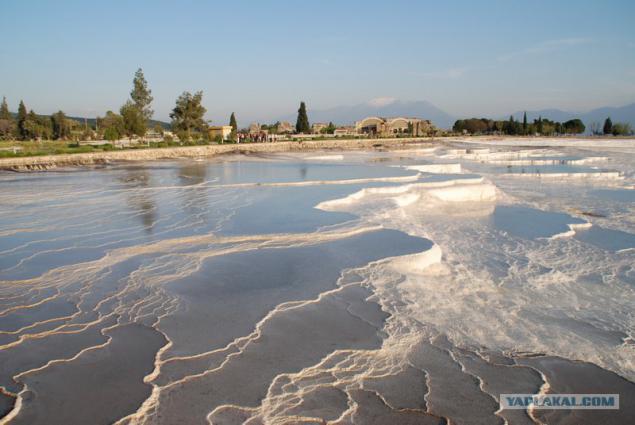
While most tourists are focusing solely on the photogenic stalactite terraces of Pamukkale offers them much more. In the immediate vicinity of the terraces at the next plateau towering ruins of the ancient city Ieropolya, the tourist heart of which is the 'antique pool. "
27
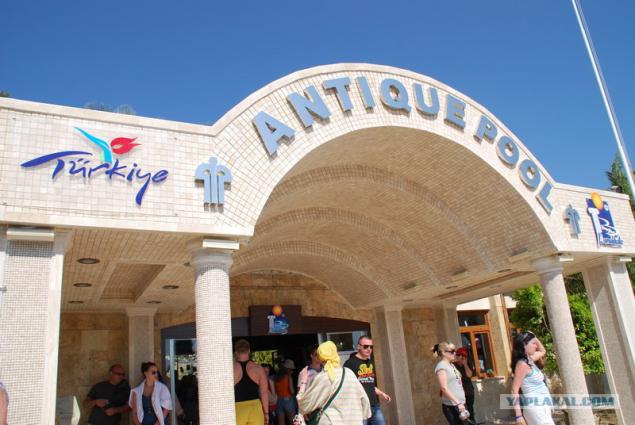
Here, each visitor is given the unique opportunity to swim, as in ancient times, in the shade of palm trees and oleanders tumbled down between the columns and walls of the city, founded in 133 BC by Eumenes II, King of Pergamon. Crystal-clear, slightly radioactive water, as shown, has a noticeable therapeutic effect in gout and cardiovascular diseases.
28
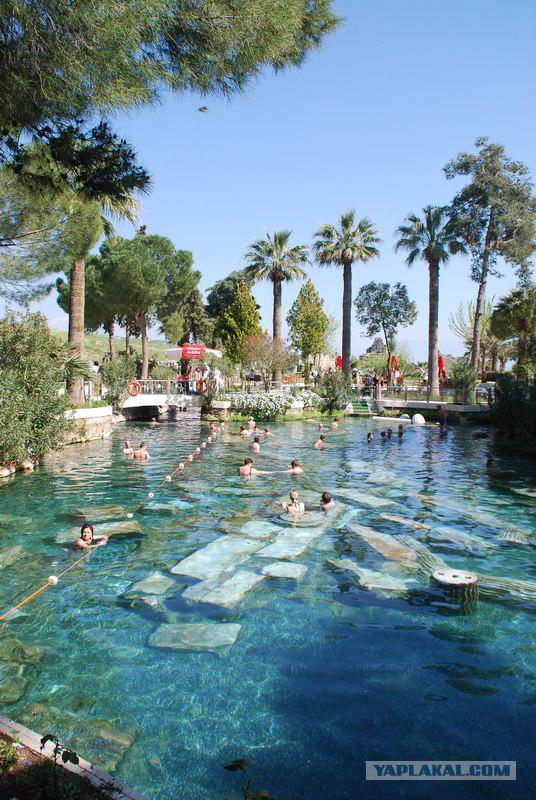
29
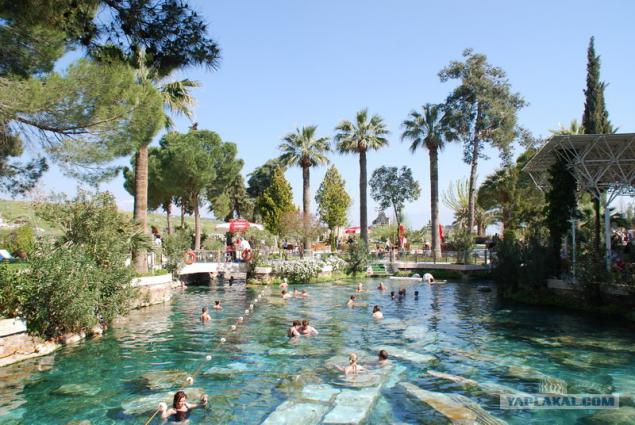
View from the town of Pamukkale, Denizli
30
PS: That's all folks, hope you enjoyed it and it was interesting!
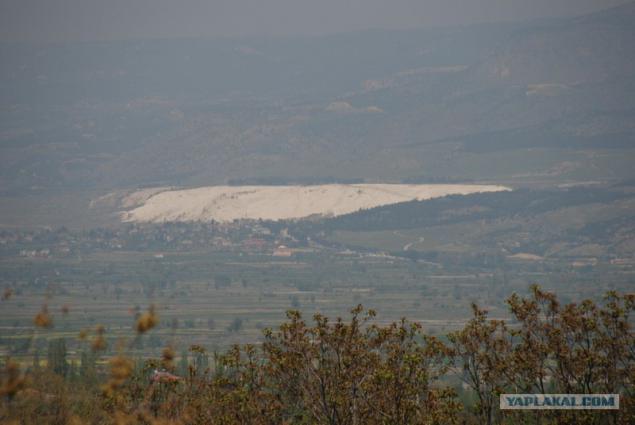
Source:
Pamukkale - a word that mellifluous those who love Turkey. Behind him lies a geological wonder called such a name for their snow-- translated it means "cotton castle».
01

Water flowing down the slopes of the mountain forms a system of reservoirs with quaint limestone walls (travertine). Dazzling white terraces (travertine formation) appeared on the mountainside as a result of salt deposits from saturated calcium sources.
02

Hot Spring Water, rich in calcium carbonate over thousands of years, has turned the ridge of the mountains, located 19 km north of Denizli, in white stone terraces. The water temperature is 35 ° C, for centuries poured from one basin to another and creates breathtaking rock formation, which was introduced in 1988 in the UNESCO World Heritage List
03

However, this fabulous dress, located at an altitude of 2000 m above the river Büyük Menderes River, threatened by the sad fate of becoming a victim of resourceful entrepreneurs. The snow-white natural pools gradually turn into dirty salty puddles. All this is officially the result of a long, hot summer, but in fact, it was due to the fact that more and more water is diverted to hotels to fill swimming pools. In the summer months crowds of tourists turned the plateau in the fair, polluting the water with oils and chemicals, adding its contribution to the destruction of this natural wonder.
04

Earlier on salt terraces were allowed to walk barefoot, but because of the many tourists who annually visit Pamukkale, is banned. Now you can walk down the path and admire the magnificent spectacle from afar. These places are used as a resort area since ancient times.
05

With the exception of specially designated tourist areas, you can not walk in travertine, as they are very fragile. Nevertheless, there is a dedicated area where you can even swim travertine. Also swimming pool is open Cleopatra.
06

Pamukkale, a wonderful place in Turkey, where there are just two "wonder of the world" - the ruins of the ancient city of Hierapolis and the unique thermal keys. The water temperature reaches 40 degrees, the air - up to 35 degrees. Exit - cold!
07

Pamukkale is a health resort. Treated here by the ancient Greeks. The treatment produced by receiving the thermal baths, mud baths and drinking mineral water, in combination with other treatments. The water in Pamukkale, enriched with calcium, has wonderful healing and rejuvenating properties.
08

At the request of UNESCO in the mid-1990s, measures were taken to save this unique corner of nature - were demolished hotel built there, and banned bathing and walking. However, with time on the terraces of the hotel was rebuilt and now provides precious thermal water from natural rock pools.
09

"Cotton Castle" is restored and takes his former fabulous views. Visitors are invited to walk barefoot on the road running along the stone terraces, which were built artificial concrete pools. They are due to precipitation of the water circulating in them, gradually covered with limestone and look like natural stone terraces.
10

11

12

13

14

15

16

17

18

19

20

21

22

23

24

25

26

While most tourists are focusing solely on the photogenic stalactite terraces of Pamukkale offers them much more. In the immediate vicinity of the terraces at the next plateau towering ruins of the ancient city Ieropolya, the tourist heart of which is the 'antique pool. "
27

Here, each visitor is given the unique opportunity to swim, as in ancient times, in the shade of palm trees and oleanders tumbled down between the columns and walls of the city, founded in 133 BC by Eumenes II, King of Pergamon. Crystal-clear, slightly radioactive water, as shown, has a noticeable therapeutic effect in gout and cardiovascular diseases.
28

29

View from the town of Pamukkale, Denizli
30
PS: That's all folks, hope you enjoyed it and it was interesting!

Source:






